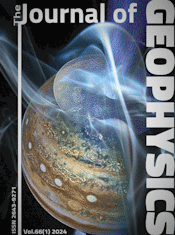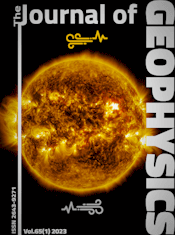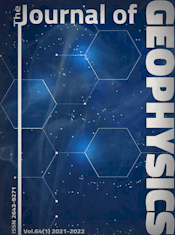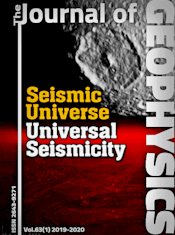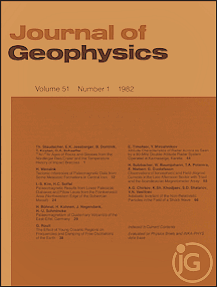Effect of parallel electric fields on whistler mode waves in Jupiter's magnetosphere
Article Sidebar

Vols. 1-18 (1924-1944), ISSN 0044-2801
Main Article Content
Abstract
Observation of auroral hiss at Jupiter by Voyager I has been suggested as being directly related to regions of parallel electric field and auroral particle precipitation. The effect of a parallel electric field on whistler mode propagation in Jupiter's magnetosphere has been studied. The dispersion relation for whistler mode waves in an isothermal one-component electron plasma in the presence of a parallel electric field has been used to study the growth of whistler mode waves propagating in the Jovian magnetosphere. The growth rates have been computed by using the observed plasma parameters at 5.6 Rj . The growth rate, which is found to be a maximum in the equatorial magnetosphere, is reduced to zero in the absence of the electrostatic field. This has lead us to conclude that, in the case of isothermal magnetosplasma, the growth rate is induced by the electrostatic field.
 ARK: https://n2t.net/ark:/88439/y007466
ARK: https://n2t.net/ark:/88439/y007466
Permalink: https://geophysicsjournal.com/article/16
Article Details
References
Gurnett, D.A., Kurth, W.S., Scarf, F.L. (1979b) Auroral hiss observed by Voyager I near the lo plasma torus. Nature 280, 767
Misra, K.D., Singh, B.D. (1977) Electric field induced instability in the magnetosphere. J. Geophys. Res. 82, 2267-2270
Warwick, J.W., Pearce, J.B., Riddle, A.C., Alexander, J.K., Desch, M.D., Kaiser, M.L., Thieman, J.R., Carr, T.D., Gulkis, S., Boischot, C.C., Harvey, Pederson, B.M. (1979) Voyager I planetary radio astronomy observations near Jupiter. Science 204, 995



